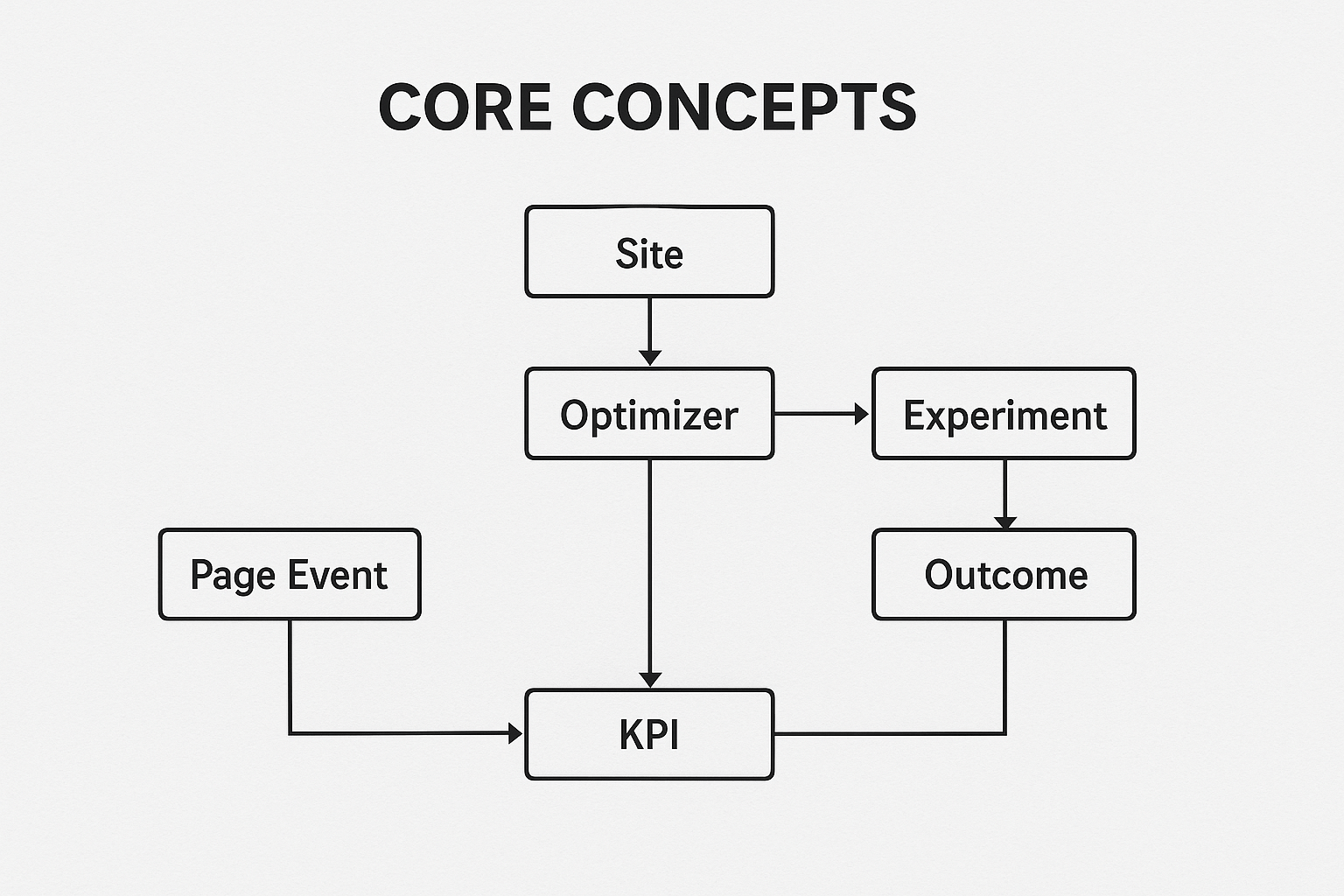Appearance
Core Concepts
Before you dive into dashboards and experiments, take a minute to understand the core building blocks of Performance Now! and how they fit together.
Site
A Site is identified by its domain.
If you have multiple domains or brands sending traffic, create a separate Site for each.
Best Practice:
- Use one Site per logical domain or closely related set of domains.
- For completely unrelated brands or projects, create a separate account.
Sites are not fully isolated—use this boundary for related campaigns or brands only.
Optimizer
An Optimizer belongs to a Site and manages a specific silo—like a traffic source, campaign type, or funnel.
Optimizers allow you to:
- Split, optimize, and analyze results by source (search, display, influencer, etc.).
- Use different landing page paths or dynamic macros for campaign flexibility.
Example:
If you run search and display campaigns to the same product, use two optimizers to separate and optimize each.
Experiment
An Experiment is what you’re testing (URLs, page elements, CSS, parameters, etc.).
- Attach experiments to one or many optimizers.
- Each experiment contains outcomes (the actual variants being tested).
Example:
Testing 5 page titles? That’s one experiment with 5 outcomes.
Outcome
Outcomes are the possible values you want to test.
- In a URL experiment: each outcome is a different landing page.
- In a content experiment: each outcome is a new headline, image, or element.
- In a CSS experiment: each outcome is a new style or rule.
Page Event
Page Events are the tracked actions on your site—page views, conversions, button clicks, timers, and more.
- Every billable event is a page event.
- Micro-events (timer hits, or small in-page actions) are valuable for deeper funnel analysis, not just purchases.
KPI
A KPI (Key Performance Indicator) groups related events and defines each step in your funnel.
- KPIs form the foundation of your funnels and are used for reporting, optimization, and conversion analysis.
- Automatic funnel ordering: KPIs are sequenced automatically from broadest (e.g., visit) to narrowest (e.g., purchase).
INFO
Tip:
When building your funnel, remember: each KPI must include all downstream actions (see Funnels & KPIs). This ensures accurate reporting and smooth optimization.
Diagram: Core Concepts
The following diagram illustrates how these core concepts relate to each other: 
Now that you know the essentials, you’ll be able to navigate the dashboard, run tests, and interpret your results with confidence.
If you have questions about setup, structure, or strategy, contact support.